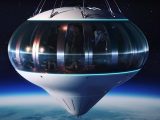
Are green hydrogen fuel cells enough for Microsoft data centers?
August 3, 2022The tech giant has announced the successful testing of robust H2-powered systems to replace diesel.
Microsoft has announced that it has arrived at the latest step in its efforts to leave diesel-powered energy for its data centers in the past through the use of hydrogen fuel cells.
The company has been testing systems powered by H2 to function as its backup generators.
The technology giant has announced that the hydrogen fuel cells had been successfully tested as a part of a system that is aimed at replacing traditional diesel-powered backup generators at one of the company’s large data centers.
Microsoft’s goal is to entirely replace its reliance on diesel as a backup power system fuel by 2030. This is a component of the company’s broader strategy to combat climate change. The purpose of the backup generators is to ensure that the data centers will remain reliably operational 24/7, even in the face of substantial power outages. Each of the company’s data centers features batteries that hold the facilities over temporarily until the backup generators kick in.
Those generators are currently powered by diesel, which produces greenhouse gas emissions and other air pollutants when used. The H2-powered alternatives release only water and heat as their emissions when generating electricity. Though large batteries can be powered by renewable energy, they don’t typically have the necessary capacity for powering a data center, and even when they can, their capacities last for a few hours at the most.

Green hydrogen fuel cells are powerful enough for massive data centers and can run as long as needed.
Microsoft’s tests involve the use of a three-megawatt H2-powered system that was able to power about 10,000 computer servers at one of its data centers. That is the equivalent amount of power needed for about 600 homes, to provide some context regarding the amount of electricity required.
“What we just witnessed was, for the datacenter industry, a moon landing moment,” said Microsoft Director of Data Center Research Sean James in an official blog post.
This test provided important information to the company, though it is important to recognize that implementing systems based on green hydrogen fuel cells at all Microsoft’s data centers will still require a lengthy road. The company first started poking around at the use of the technology back in 2013. It has been working with H2 since 2018.



 With over 15 years of reporting hydrogen news, we are your premier source for the latest updates and insights in hydrogen and renewable energy.
With over 15 years of reporting hydrogen news, we are your premier source for the latest updates and insights in hydrogen and renewable energy.
Pleased to read about the sucessful use of hydrogen fuel cells in Microsoft computer data centers. Something mentioned in a previous email to the Bill Gates Foundation. Microsoft and Amazon have wisely commited early to using hydrogen fuel cells in their business operations.
Amazon should consider producing hydrogen on site and begin purchasing all Prime delivery trucks with hydrogen fuel cells. The converting the entire Prime fleet could be an example to all transportation businesses. Current technological advances in both producing hydrogen and using it in hydrogen fuel cells will soon benefit the transportation industries.
Cheyenne Wyoming, how did that fuel cell install work?
The converting of the entire Amazon Prime Delivery Fleet could be an example to all transportation businesses. Walmart should consider doing this as well.
Multiple “boxes” from Bloom Energy Company could, indeed would, provide adequate energy for this data center either as primary source or backup.
This is a fascinating exploration of green hydrogen’s potential in powering Microsoft data centers. I’m intrigued by the sustainability aspects, but I’m also curious about the reliability and scalability of hydrogen fuel cells compared to other renewable energy technologies. It would be great to delve deeper into how these fuel cells can be integrated with existing infrastructure and what challenges Microsoft might face in this transition. Keeping an eye on the real-world impacts will be essential as the tech evolves!
This is an intriguing exploration of the potential of green hydrogen for powering data centers! It’s fascinating to consider how Microsoft can lead the way in sustainability. However, I wonder about the scalability and infrastructure challenges that come with transitioning to hydrogen fuel cells. Will there be enough support to make this a viable long-term solution? Looking forward to more discussions on this topic!